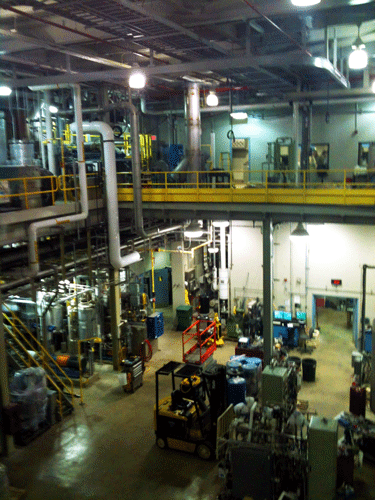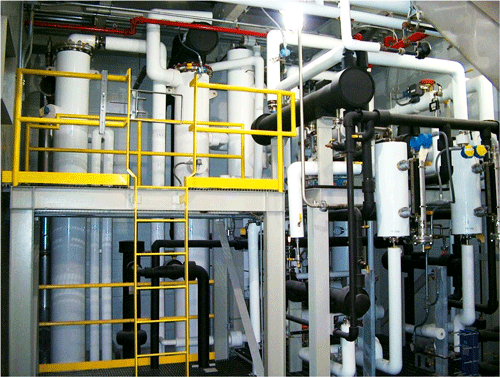Several EPIC employees took advantage of an opportunity presented by ISA to tour the ethanol pilot plant facility located on the SIUE Campus and run by the National Corn-to-Ethanol Research Center. The ethanol pilot plant is 24,000 square-foot, and operates a 1/250th scale ethanol production facility with a 100-400 bushel per day capacity. The purpose of the research pilot plant is not produce ethanol, but to provide data to clients who are experimenting with scale-up of ethanol production processes.
The plant installs and runs client technology through several weeks of testing, recording a plethora of data through copious amounts of instrumentation on site. An attached lab analyzes the data and returns results to clients. Any ethanol produced during the experimentation is shipped to larger facilities that process fuels.

Where the process really breaks away from brewing is in the next step, the distillation columns. Distillation is used to separate the ethanol from the water after fermentation, based on the different boiling points of water and ethanol. After distillation, the ethanol mixture is 95% pure. 100% purity cannot be achieved with distillation alone, because the boiling points of ethanol and water at too close to get 100% of the water removed. The final 5% is removed through a molecular sieve.
The ethanol is shipped away in trucks and is denatured in the truck. The waste water and materials are then sent to an evaporator/centrifuge and dryer drum to separate the solid from liquid waste. Corn oil can also be removed at this stage of the process. Solid waste is bagged as distillers grains and sold to farmers.
Something neat about this facility is that all the corn flour, which is ground on site, and solid materials are moved throughout the facility through use of vacuum pumps. It’s not very energy efficient, but it keeps the facility very clean and provides a quick way to transport the solid ingredients.

Though the subsidy for ethanol has expired, the pilot plant is still seeing steady business. The staff says there seems to be little to no change in business since the subsidy ended.
EPIC is modular systems designer located in St. Louis, MO. To learn more about EPIC, visit our website or contact an engineer today.
Looking for industrial distillation equipment or distillation systems? Visit our distillation webpage.
